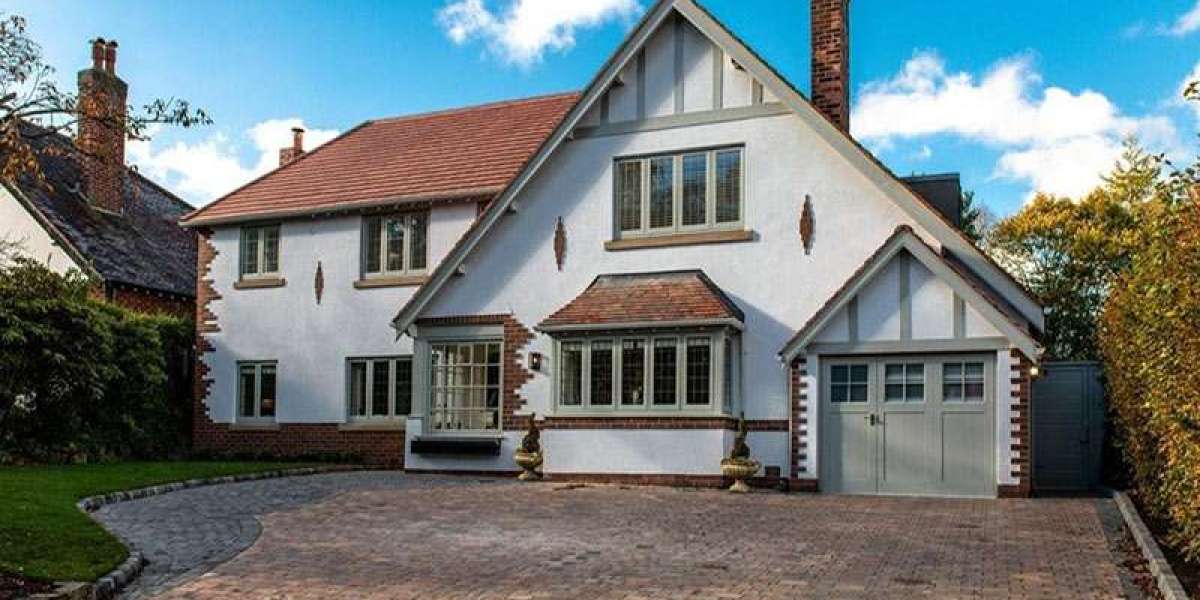What is Gross Living Area (GLA) and How Do You Calculate It?
Knowing how to determine the Gross Living Area (GLA) of a residential or commercial property is an important part of developing the appraisal report and approximating the value of a home. This short article walks you through the actions on how to determine GLA with confidence.
What is Gross Living Area (GLA)?
Property is measured after regional regulations worldwide. In the US, Gross Living Area (GLA) is defined by the Appraisal Institute's Dictionary of Real Estate Appraisal, 7th Ed., as the overall location of completed, above-grade (in the air) property area. It is determined by determining the outdoors perimeter of the structure and consists of just ended up, habitable, above-grade living space. Finished basements and attic locations are not typically included in the GLA total. However, local practices differ on this.
GLA is an important part of the appraisal of a home or residential or commercial property. It is not the like total living location (TLA). Although the Appraisal Institute does not strictly specify TLA, it is typically taken to include any completed basement space, livable attic areas, and even unattached accessory residence systems.
Why is it Important to Know the Exact GLA of a Home?
The livable, above-ground area in a house is the part of the home that commands the best price. The appraisal of the residential or commercial property is frequently a direct result of just how much of the residential or commercial property's area has this condition and will, in turn, directly effect insurance coverage costs and value and, eventually sales rate.
Because of this, it is essential that the appraiser consist of every legitimate area in a GLA computation so that the residential or commercial property achieves its rightful list prices, the mortgage lending institution knows the appropriate value, and the residential or commercial property is correctly guaranteed.
How is Gross Living Area Measured and Calculated?
Historically, GLA has been open to analysis in how it was determined, with appraisers, remodelers, and so forth utilizing various definitions and computations. In the United States, the American National Standards Institute (ANSI) just recently presented ANSI Z765-2021 to document typical standards for appraisers.
Some companies, such as Fannie Mae, a leading source of mortgage financing in the United States, now need appraisers to use these requirements and provide a handy summary file.
The ANSI home measurement requirement has a couple of crucial elements:

- It uses to single-family housing. It does not use to houses, condominiums, or business residential or commercial property.
- It defines Gross Living Area (GLA) and what to consist of or exclude from the calculation.
- Measurements are kept in mind to the nearest inch or tenth of a foot and reported on a sketch or layout of the residential or commercial property. The final square footage computation is to be reported to the nearest entire square foot.
What Is Included in the GLA Calculation?
For a space to be consisted of as GLA, it should comply with these six criteria:
It must be finished. It needs to include walls, floors, and ceilings, finished with standard materials such as carpet, drywall, etc.
It must be above ground. Even an area just 2 ft listed below ground counts as basement area and is left out.
It has actually to be confined. It must have four walls.
It requires to be adjoining. It needs to be connected to the rest of the Gross Living Area.
It needs to be conventionally warmed, utilizing forced air, solar, glowing heating, and so on (area heaters do not count).
It should be allowed. The regional city or county building department should have allowed the location.
If an area satisfies all these components, include it in the GLA. Note that the external walls for included locations become part of the measurement. A space is left out from the GLA if any of the above requirements are unmet. Instead, it can be noted as a separate line item in the report and included as part of the TLA.
What Are Non-GLA Areas in a Residential or commercial property?
As the GLA is the overall of the above-ground domestic space of contiguous, ended up areas, it is essential to understand which locations of a residential or commercial property are not consisted of in the GLA calculation. These areas are, nevertheless, frequently included in the estimation of TLA.
Examples of areas that are not consisted of in the GLA computation are:
- Unfinished garages.
- Below-grade (below ground level) rooms such as basements. This consists of walk-out basements - ones with direct access to the outside - generally discovered in a home constructed on a slope. Instead, list them in the TLA.
- Finished sheds or structures not linked to the primary building, such as cottages or Accessory Dwelling Units (ADU). Instead, list them in the TLA.
- Finished locations that are only linked to the primary home by an incomplete area - simply put, they are not connected by an ended up and heated corridor or staircase. For example, a visitor suite connected to the primary home by means of an incomplete garage. Instead, list them in the TLA.
- Finished living spaces where over half of the ceiling location is less than 7-foot-high. If the ceiling slopes (such as in an attic), any location with less than a 5-foot ceiling height must be left out from the GLA.
- Covered or revealed patios and decks.
- Porches that are not confined, or if confined, are not appropriate for year-round usage. These are frequently called three-season rooms.
- Openings in a level that look down to the floor listed below, such as a vestibule or foyer.
- Bump-outs that do not have a flooring. For example, a cantilevered window-seat bump-out.
- A fireplace is omitted if it is surrounded on 3 sides by external walls.
- A space that was built or remodeled without a suitable permit.
5 Practical Tips on How to Measure GLA On-Site
Start with a walkaround - Walk around the outside of the home or residential or commercial property to get an idea of the shape of the residential or commercial property.
Sketch on paper or tablet - Make a quick sketch of the residential or commercial property shape on paper or create a digital sketch using floor strategy software on your tablet.
Start measuring - work your way from corner to corner and use a tape measure, roto wheel, or a laser to get the proper measurements. Round your measurements to the nearest inch or the nearby 1/10th of a foot so you comply with the ANSI standard.
Head inside - Make sure to go inside the residential or commercial property and determine any areas that do not fulfill GLA requirements. These locations must be listed as TLA.
Do the math - Combine all the areas that abide by GLA requirements - this is the GLA. Then add up the areas that are non-GLA, and add these to your GLA area, which gives you your TLA.
Bonus Tip! Use Software to Double-Check Your Calculation
Make a professional layout sketch complete with measurements and annotations, and include this as part of your appraisal report. This provides complete openness on how you pertained to your calculation and gives you the confidence you have reached the right number.
Pick layout software like RoomSketcher, as here you get an inbuilt total area calculator that you can use to verify your measurements. If everything compares, then terrific! If not, examine that you've gotten in the exact same measurements into RoomSketcher as in your manual computations, and review your manual estimations for any mistakes or oversights.
- Learn more about how appraisers utilize RoomSketcher
GLA vs. Total Living Area (TLA)

While GLA is the finished, connected, above-ground area in a home, Total Living Area (TLA) generally consists of below-ground finished area and non-connected (or non-contiguous) area.
Total Living Area consists of, for instance, completed basement area and different finished structures such as homes and accessory dwelling systems. Additionally, heated, completed attic areas would be consisted of as long as majority the location has a ceiling height of seven feet or more. When it comes to a slanted ceiling in the attic, just the location with a height of 5 feet or more is counted.
If you use floor plan software like RoomSketcher to draw your professional layout, you can establish any space to omit, so the automatic estimation doesn't include this area.
GLA vs. Gross Building Area (GBA)

Whilst GLA is the requirement for single-family homes, multi-family houses with 2 to four units are often measured using Gross Building Area (GBA). Both GLA and GBA determine the finished locations of a building.
The main difference is that below-grade living area is included in the Gross Building Area. Like GLA, GBA consists of completed corridors, storeroom, laundry rooms, and interior stairways.
GLA vs. Gross Internal Area (GIA)
Gross Internal Area (GIA) is typically used for industrial structures. The Gross Internal area (GIA) is the entire enclosed internal flooring space, determined to the inside face of the exterior walls.

This measurement can offer business structure rents an idea of the usable interior floor location. The measurement consists of any area utilized by internal walls or partitions, along with hallways, restrooms, and storeroom. It may likewise include garages and basements.
GLA vs. Total Square Footage
There is no "main" meaning of overall square video footage. Rather total square footage is utilized to explain the square footage of a specified area. You could, for example, report the overall square video of the garage, which would not show whether the garage was ended up or contiguous with the home.
The GLA just consists of above-grade, completed, contiguous areas of a home whilst the total square video includes other areas (that may not be living areas) as long as they have walls, ceilings, and floorings.
Total Square Footage can include garages, workshops, unfinished storage locations, porches, patio areas - any location under the primary roofing, along with separated structures like different garages, visitor suites, or cabanas.
GLA vs. TLA vs. GBA vs. GIA
Still confused? Take a look at this convenient table to give you a quick referral as to what is what:
Frequently Asked Questions (FAQ):
Are external walls included in the GLA calculation?
Mostly. A GLA computation consists of the external walls for the rooms, areas, and staircase, which satisfy the GLA standard, so just the outside walls of those locations are included.
Is a garage included in the Gross Living Area?
No, unless it has actually been allowed and converted into an above-grade, contiguous, finished, warmed, habitable area.

Are closets consisted of in Gross Living Area?
Generally, yes, if they meet the height requirements.
Are stairs consisted of or omitted in GLA?
The stair treads and landing areas are thought about part of the space from which they descend, so if that room is considered part of GLA, so is the stair area. If the stair opening is larger than the stairs, then just the stairs (treads and landings) are consisted of in the GLA for the floor from which the stairs descend.
How do you compute stairs in Gross Living Area?
The stair tread and landings are consisted of in the Gross Living Area for the level from which they descend. For instance, stairs coming down from a 2nd level to the ground floor are counted in the GLA of the 2nd level.
Any area underneath the staircase is included in the square video of the flooring to which the stairs come down. So the location beneath the staircase in our example is consisted of in the GLA for the ground floor.
Note that if the opening to a stairwell is the very same size as the stairs, then the whole opening becomes part of the GLA for the floor from which the stairs come down. If the opening is larger than the stairwell, then consist of only the location equivalent to the size of the stairs (in the GLA for the floor from which the stairs come down).
Are fireplaces included or excluded in the GLA?
If a fireplace is surrounded on 3 sides by external walls, it is not part of GLA.
Is the attic consisted of in the GLA?
Finished attics prevail in many locations. According to the meaning of GLA from the Appraisal Institute, attics are not generally included in the GLA. However, local practices on this vary. In numerous locations, an attic's area can be consisted of in the GLA as long as it is heated up and completed.
If there is a sloped ceiling in the attic, then the ANSI Z765-2021 standard states that you can only include the floor area where the ceiling determines 5 feet up. Furthermore, at least one-half of the finished floor area must have seven feet of ceiling height.

Take Your Appraisals to the Next Level
Appraising is an important job requiring precision and attention to detail. There are usually recognized measurement guidelines depending on the area in which you live. Some of the standards now require computer-generated sketches for appraisal reports.
If you desire an easy method to turn your hand-drawn sketches into expert layout, inspect out RoomSketcher. If you desire to discuss our services or ask concerns about Gross Living Area computations, please call us; we would enjoy to help you.
Don't forget to share this post!
Recommended Reads
How to Measure Floor Area and Calculate Square Footage
Measure floor areas quickly, rapidly, and properly. The proper results are important for purchasing products for renovation projects, preparing sales and marketing products for a residential or commercial property, and creating the furniture design.
How Much Does a Floor Plan Cost?
Wondering about layout expense? We assist you comprehend price differences in between layout from architects, draftsmen, and software.
The 7 Measurement Types in RoomSketcher
Did you know that RoomSketcher uses seven different types of measurements? From showing space location to measuring the range in between items, we're here to direct you through every one step by action.








